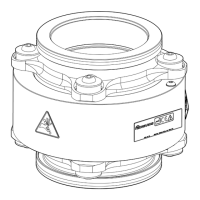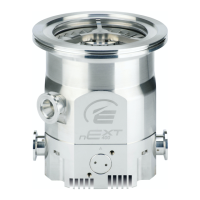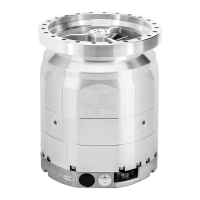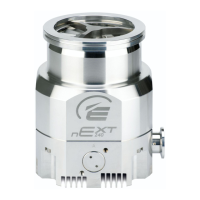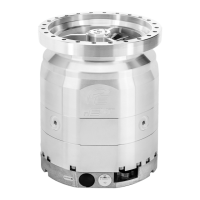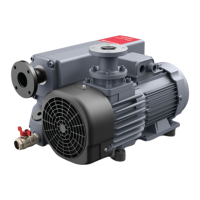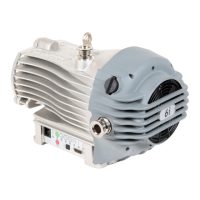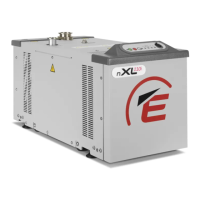2.4.5 Automac v
ent opons
The manufacturer's TAV vent valve can be connected to the nEXT pump's controller. The
controller can give number of dierent venng opons.
The drive electronics can control the rate of venng. Using this feature, the pump can be
vented from the full rotaonal speed in a controlled manner that will not damage the
pump bearings. When the rotaonal speed of the pump decreases below 50% of the
maximum speed, it is safe to do a hard vent (open the vent valve fully).
Many venng opons are available, that includes:
▪ Hard vent when the rotaonal speed decreases below 50%
▪ Controlled vent when the rotaonal speed is above 50% speed and hard vent is
below 50% speed
▪ Hard vent immediately through an applicable restrictor.
Controlled venng gives a quicker ramp down me by controlling the vent rate through
a single large orice across the speed range of the pump. List of the venng opons is
given in Vent opons, vent valve connecon and control on page 57.
A feature is given that allows a delayed start of the nEXT pump. With this feature, the
vent valve can be closed before starng the nEXT pump. This allows the backing pump to
decrease the pressure in the vacuum system before starng the nEXT pump.
If the controller is not used to control a TAV vent valve, it can be used to operate a fan.
You can congure the controller to permanently enable the fan.
2.4.6 Normal speed seng
The normal speed is a user‑selectable parameter which can be set from 50% to 100% of
full rotaonal speed.
When the pump gets to normal speed, a signal is available on the normal pin of the logic
interface connector. The signal can be used to control the applicaon as it shows that
the vacuum performance (pump speed) is at a set level. The default seng is 80% of the
full rotaonal speed. Refer to Normal speed seng on page 65 for instrucons to
change the normal speed seng.
2.5 Logic interface
The pump controller can be operated only through the logic interface. The signals on the
logic interface are of three types:
▪ Control inputs: Switch‑type signals that ar
e used to control the pump
▪ Status outputs: To idenfy the status of the system
▪ Analogue output: Gives a 0 ‑ 10 V output for a number of pump parameters.
The logic interface supports the serial control and the parallel control to monitor and
control through one connector. For serial control, RS232 (default) or RS485 can be
selected using the RS485 / RS232 slide switch which is given on the motor controller.
Refer to Connecon for serial control and monitoring on page 47.
You can plug the logic interface into the manufacturer's TIC Turbo Controller or
TIC Turbo Instrument Controller and then use the given funconality. The logic interface
can be connected to the customer control system as an alternave.
04/2022 - ©Edwards Limited
Page 15B80000880_G
B80000880_G - Intr
oducon

